Prof. Witold Nazarewicz
http://en.wikipedia.org/wiki/Witold_Nazarewicz
Professor Witek Nazarewicz received his Ph.D. from Warsaw Institute of Technology in 1981. Dr. Witold Nazarewicz is a Professor of Physics at both the University of Tennessee and Warsaw University, Poland. He is an adjunct faculty member in the Oak Ridge National Laboratory Physics Division and has been serving as the Scientific Director of the ORNL Holifield Radioactive Ion Beam Facility since 1999. He is also a member of the Joint Institute for Heavy Ion Research directorate. He has held several visiting positions, including professorships at Lund University, the University of Cologne, Kyoto University, and the University of Liverpool. Dr. Nazarewicz is a Fellow of the American Association for the Advancement of Science, American Physical Society and the U.K. Institute of Physics, and a member of the Polish Physical Society and the European Physical Society. He was named a 2008 Carnegie Centenary Professor by the Carnegie Trust in Scotland. Dr. Witek Nazarewicz is a distinguished theorist with broad expertise in nuclear physics and computational many-body problem. He is the author of seven review papers and more than 270 refereed publications in scientific journals. He is listed by ISI among the most highly-cited physicists <http://isihighlycited.com/> . He has also made more than 150 contributions to major conferences, published in their respective proceedings. He has given ~165 invited talks at major international conferences and more than 200 invited seminars and colloquia. Dr. Nazarewicz has helped organize more than 30 meetings and conferences and presently serves on 14 professional committees and editorial boards. More information about Prof. Witek Nazarewicz and his research can be found at
http://www.phys.utk.edu/faculty_nazarewicz.htm
Nuclear science today is focused on three broad but highly related research frontiers: (1) quantum chromodynamics, which ultimately will tell us how nuclei are held together; (2) the structure of atomic nuclei and nuclear astrophysics, which addresses the origin of the elements; and (3) a new standard model of fundamental particles. Through these research frontiers, nuclear scientists are addressing the basic questions that drive our field.
Some of these questions will be highlighted in this presentation, with a focus on a broadly understood strongly-interacting many-body problem.
President Jones visits Dr. Nazarewicz before his colloquium. Physics visitors, and physics students, joined President Jones for a small celebration of the end of our colloquium series.
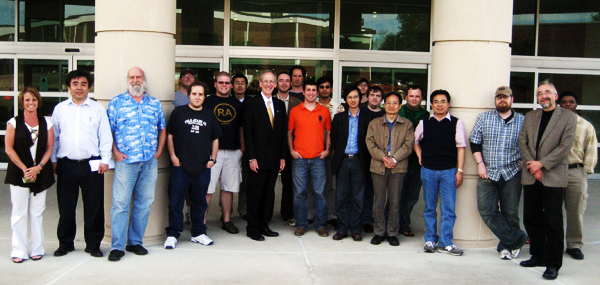
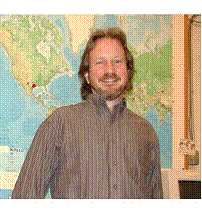
Prof. Winget received his B.S. in Physics from the University of Illinois in 1976 and his Ph.D. in Physics and Astronomy from the University of Rochester in 1982. In 1981, Prof. Don Winget predicted and discovered a new class of pulsating variable stars. This was the first time in the 300 year old field of pulsating variable stars that anyone predicted a new class of pulsating variable stars before their discovery. In 1985, he made the first direct measurement of stellar evolution. In 1987, he developed a new method for measuring the age of the Galaxy, currently the most accurate method for dating the stellar components of the galaxy. Winget co-founded the Whole Earth Telescope (WET) which uses essentially all of the major optical observatories on the planet working together to defeat dawn. He developed and is now implementing a new technique for finding planetary systems like our own solar system. This is currently the only technique sensitive to the kinds of planets we have in our Solar System. Don and his research group use these same data sets to do extreme physics, constraining masses of theoretically proposed particles – such as axions and plasmon neutrons. This work will help explore the physical nature of dark matter. More information about Prof. Don Winget and his research can be found at
http://www.as.utexas.edu/astronomy/people/winget/winget.html
The white dwarf stars are the remnants of almost all stars with initial masses less than eight times that of the Sun. They are cosmic chronometers, containing a fossil record of the history of star formation in all stellar populations, presenting a way to study the evolutionary history of star formation in each of the morphological parts of our galaxy. Their ages are more straightforward to estimate than essentially all other astronomical objects -- their evolution is primarily one of cooling of an electron degenerate interior neutralizing a Coulomb gas of ions. In addition to cosmochronology, the white dwarf stars are useful testbeds for studying a number of physical problems. These include phase transitions in the dense Coulomb plasma, measuring melting temperatures and studying the release of latent heat, measuring plasmon neutrino rates, and setting limits on axion models for dark matter. We use the techniques of asteroseismology to study the deep interiors and explore the prior evolution of the star, including nuclear burning profiles. All of this science hangs on accurate temperature and gravity determinations from spectral lines and surrounding continuum. Here there are serious obstacles because of the relatively high densities in the photospheric plasma and associated strong broadening. In order to eliminate this problem, we have initiated a series of experiments on the Z machine at Sandia National Laboratories where we are building macroscopic quantities of white dwarf photospheric materials, star stuff, in the lab. I will describe the results of our first attempt to create and observe this material.

Shannon Carter is Associate Professor of English and co-director of the new Converging Literacies Center (CLiC) at Texas A&M-Commerce. The author of The Way Literacy Lives (SUNY P, 2008), Carter has published articles in College English, College Composition and Communication, the Journal of Basic Writing, the Community Literacy Journal, Kairos: A Journal of Rhetoric, Technology, and Pedagogy, Computers and Composition Online (forthcoming) and elsewhere on subjects ranging from prison literacy to faith-based literacies to basic writing and new media. Carter's commitment to undergraduate research is extensive, including co-editing a special issue of Kairos dedicated to digital scholarship by undergraduates in writing and rhetoric (available Summer 2011) and serving on the Editorial Board for the national academic journal Young Scholars in Writing: Undergraduate Research in Writing and Rhetoric, as well as the newly formed Conference on College Composition and Communication (CCCC) Task Force for Undergraduate Research and the Board of Consultants for the national Writing About Writing Network. She is also co-chair of the Council of Basic Writing (CBW) and, since 2008, co-editor of CBW's official, refereed publication BWe: Basic Writing e-Journal. Since 2008, Carter has also served as coordinator for the long-running Council of Writing Program Administrator's initiative the National Conversation on Writing (NCoW)--a digital collection of oral histories and other artifacts about writing and writers. Since 2008, Texas A&M-Commerce has served as institutional home for NCoW, BWe, and CBW. Recently, Carter has turned her attention to activist rhetoric. Her current book project is tentatively entitled Writing for a Change: Race, Activism, and Local Politics in a Southern, Rural University Town Following Integration (1964-1980). Using critical race theory as primary theoretical framework, this rhetorical history employs life history research and extensive use of archival materials to define and analyze the "codes of cross-cultural conduct" (Jones-Royster 2001) established by local writers promoting and sustaining change.
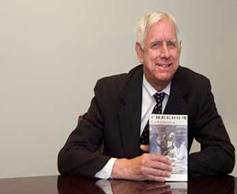
The author of six books and historical articles too numerous to count, Conrad recently retired after 37 years as University Archivist at Texas A&M University - Commerce. His most recent book Freedom Colonies: Independent Black Texans in the Time of Jim Crow (University of Texas Press 2005), co-authored with regular collaborator Thad Sitton, won the prestigious Texas Institute of Letters Award in 2006. In fact, Conrad's scholarship often has been cited for its excellence. Among his accomplishments are the prestigious Fehrenbach Award, the Lock Award for Best Book on East Texas History, the Dallas Public Library's Award for the Book Making the Most Significant Contribution to Knowledge and the Thomas L. Charlton Lifetime Achievement Award from the Texas Oral History Association. He currently chairs the Hunt County Historical Commission and has served on the boards of the Texas Oral History Association and the East Texas Historical Association. Conrad is active in the Oral History Association and has made several presentations at annual meetings.
In his award-winning study Because We Live Here (2007), activist and literacy scholar Eli Goldblatt urges teachers and researchers to get beyond the classroom, laboratories, and libraries--into the world and, increasingly, onto the local scene. Together, Carter and Conrad respond to this call by attending to the translocal through the Norris Community. Existing within the Commerce City limits since the 1890s, the Norris Community was home to the vast majority of Commerce's African-American population for much of the 20th century. Similar communities existed throughout the segregated south until Jim Crow laws and customs gave way to integration in the last half of the 20th century. The current presentation describes this local context from three perspectives: (1) a rhetorician studying text use and production among members of one activist group organizing for local change in the decade following state-mandated integration (Norris Community Club, established in 1975), (2) a university archivist collecting and preserving local African American history, and (3) faculty leading a research center (Converging Literacies Center) in exploring emerging technologies and providing opportunities for graduate student involvement in these and other research and community-outreach projects. To attend to the "translocal" requires participants to put local issues in global contexts (and the global in local contexts), thus Carter and Conrad will devote a portion of their presentation to disciplinary implications--especially in terms research and preservation methods.
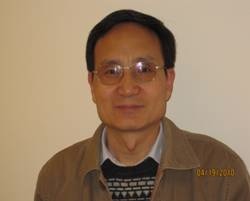
Prof. Li received his Ph.D in physics from Nanjing University in 1988. He has conducted research in quantum optics, quantum many-body theory, atomic and nuclear physics at several prestigious universities in China, Germany and the USA. He is serving as the Dean of the College of Sciences at Xian Jiaotong University http://www.xjtu.edu.cn/en/ (ranked among the top 10 universities in China). Prof. Li is currently visiting TAMU-Commerce for 2 months.
We consider an atom-field coupled system, in which two multilevel atoms are respectively trapped in two distant cavities which are connected by an optical fiber and are shined by a broadband squeezed light. Based on quantum reservoir engineering, we find that the system can be reduced to two cascade atoms collectively coupled to a squeezed vacuum reservoir. We show that a two-qubit geometric CPHASE gate between the two atoms can be implemented through adiabatically manipulating the squeezed reservoir along a closed loop. The key point of the proposal is to realize quantum gates by engineering and manipulating environment other than by either controlling the Hamiltonian of the system or by choosing measurement strategy. The scheme has three remarkable features. First, no matter how small but nonzero the squeezing amplitude is, a CPHASE gate with arbitrary phase shift can always be implemented. Second, in contrast to previous quantum computation schemes, the larger the effective coupling strength between the environment and the atoms is, the more reliable the CPHASE gate is. Third, the holonomic quantum computation can be implemented in the Decoherece-free subspaces. Therefore it can be immune to both the environment-induced decoherence effects and control-led errors. In the usual application of squeezed light such as detecting gravitational wave, a strong squeezing is desired. However, in our scheme, the high controllability of squeezing amplitude and phase is required. The controllability may be a challenge task to experiment. Thus, we propose another equivalent scheme without the squeezed vacuum source to realize quantum computation through engineering and manipulating effective environment.
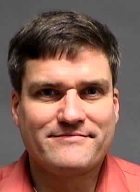
Dr. Paul Deignan received his Ph.D. from Purdue University, Indiana in 2006. His dissertation was entitled, "Information-Theoretic System Identification" which introduced a frequentist methodology for structure determination and model parameter estimation utilizing entropic measures of dependence together with conventional embedding techniques. He is presently a Principal Engineer with L-3 Communications / Mission Integration Division in Greenville, Texas. His current research focus is in the identification of information flows in partially determined networks. He has served in Iraq as an intelligence officer for which he was awarded the Bronze Star. Dr. Deignan is a Senior Member of the IEEE and a member of the AMS.
Sensor fusion presumes that there exists a common object of information as well as a common reference for sharing information among sensors. This object may be abstractly described as a multi-dimensional hypercube with dimensions corresponding to distinct sensors over a common geographical basis and will be referred to as an entropic map. In general, the sensor space of the hypercube is a subspace of a larger dimensional space in which the entities and events of interest are fully described, i.e. there is not necessarily a functional relationship between measurements of an entity of interest and sensor coordinates of the hypercube. For this reason descriptors of inter-dimensional association based on measures of central tendency are not always sufficient to quantify all entity related information present in the measured sensor space. However, entropic measures do possess the ability to quantify multi-valued relationships and when estimated as proposed here, also have additional mathematical properties that allow entropy estimates to be identified with "information"
The utility of entropic measures goes far beyond their efficiency as a metric of discrimination of multimodal probability distribution or as a measure of concentration. Entropic measures have special properties arising from the fact that the logarithm is a group isomorphism from to in that they enforce Bayes law in the relation between the frequentist counting of measurements and the probabilistic interpretation of the measurements. When restricted to finite probability spaces, normalized measures of mutual information satisfy all of the Rényi postulates for measures of dependence. By this token, entropy is the most general measure of statistical certainty when estimated with finite data.
Marginal entropies are maximal if and only if the marginal probabilities are uniform (the absence of probabilistic structure). If the mutual information between two or more sensors is equal to their joint entropy, a one-to-one correspondence between sensors exists irrespective of their ordering. Thus, entropic measures provide a quantitative method for the comparison of information redundancy between sensors. Entropic measures may be estimated directly by substitution of probability estimates generated from occurrence counts within binning intervals. When estimated in this manner, the entropic functional must be corrected for a bias. An exact formula for the partition entropy bias on a finite set is shown.
Optimal sensor suite selection with Shannon’s joint mutual information as the criterion of merit evaluated over the candidate set of sensors is a combinatorial optimization problem in integer programming. In general, a dimensional stopping criteria need not be calculated a priori, but can be found through the branch and bound algorithm for a fixed set of measurements as a result of the finite data bias correction for partition entropy In order to illustrate the benefits of information-theoretic fusion techniques as objectively as possible, these methods are applied to a standard data mining competition database consisting of categorical and continuous data with excellent computational and predictive performance results.
Vinod Sharma, P.E. Senior Managing Engineer, Exponent Mechanics and Materials
Mr. Sharma has 20 years of broad-based technical expertise in design analysis, testing, and engineering program management to address plant equipment reliability, condition monitoring, and maintenance issues at domestic and international power generation stations, oil refineries, petrochemical plants, and pipelines. Mr. Sharma has hands-on experience with a range of flow-control hardware, including instrumentation, valves, pumps, and steam boilers. He has used advanced analytical software and detailed computer-based analysis and testing tools, including non-intrusive diagnostics and flow measurements, experimental design and instrumentation, data acquisition and digital signal processing, computational fluid dynamic analysis of valves, and finite-element analysis for sealed bearing assemblies of down-hole drilling motors. His broad background and active industry involvement have provided him a well-rounded understanding of a range of related fields, such as 10CFR50 Appendix B requirements, and the application of ASME Codes and Standards to evaluate operation and maintenance issues, fabrication, and design defects. He has taught several advanced technical courses on wear and fatigue failure analysis and prevention. Mr. Sharma earned a B.Tech in Mechanical Engineering from the Indian Institute of Technology Madras, an M.S. in Mechanical Engineering from the University of Houston and an Executive MBA from The University of Texas in Austin. He is a licensed Professional Engineer in the States of Texas and California.
Paul Stevens, P.E. Director, Capital Region Operations, Epsilon Systems Solutions, Inc.
Paul received his Bachelors in Mechanical Engineering from Clarkson University, his Masters in Mechanical Engineering from the University of Michigan and his Master of Arts in National Security and Strategic Studies from the Naval War College. He is a registered Professional Engineer in the State of Michigan. Paul is the responsible for his companies commercial nuclear industry support services as well as the business development lead for the Washington, DC area. He heads a cadre of seasoned professionals who can provide nuclear training, assessment, and corrective action development/execution services. Prior to joining Epsilon Systems, Paul served for over 25 years in the US Navy Submarine Service. He qualified on 5 different reactor designs (S7G, S5W, S6G, S8G and S6W) and served on four submarines (USS Pogy, USS Minneapolis-Saint Paul, USS Florida (Gold) and was the Commanding Officer of the USS Seawolf (SSN 21)). After his command tour he worked for the Director of Naval Reactors as his Special Assistant for Fleet Operations and the Prospective Commanding Officer Instructor. Paul resides in McLean, VA with his wife Karen and their three children, Fred, Grace and Maxwell.
The commercial nuclear industry accounts for 20% of the United States' electricity production and has the largest fleet of nuclear reactors in the world, with 104 plants currently operating in the nation. Yet many Americans are unaware of the benefits of nuclear energy, which emits no carbon dioxide during electricity production and provides low cost electricity. Going forward, President Obama has recently pledged support for the industry, including a proposal of $54 billion in loan guarantees for new reactors in the 2011 budget. With new nuclear power facilities on the horizon, Clean Energy America speakers believe it is imperative to incite discussion and answer questions about the future of the industry. The safety of the plants, the costs associated with running and building new plants and nuclear waste disposal will be discussed in this talk.
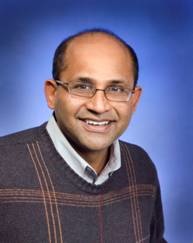
Dr. Raju Venugopalan is a Senior Scientist in the Nuclear Theory Group at Brookhaven National Laboratory and Adjunct Professor at the State University of New York at Stony Brook. His research interests are in Quantum Field Theory, in particular the many-body features of Quantum Chromo-dynamics. Dr. Venugopalan is one of the principal developers of a theory which describes the properties of matter in high energy hadron wavefunctions as a Color Glass Condensate and his seminal papers with Dr. Larry McLerran on the subject are among the most highly cited papers in nuclear and particle physics. Dr. Venugopalan was elected a Fellow of the American Physical Society in 2007 and is currently an International Scientific Associate of the LHC Discovery Center in Copenhagen, Denmark. Among Dr. Venugopalan's favorite activities are long walks with his dog in the woods of beautiful eastern Long Island
At extreme temperatures and densities, the properties of strongly interacting matter are described by the collective many-body dynamics of its fundamental constituents, quarks and gluons. Such a Quark-Gluon Plasma (QGP) existed in the early universe about a micro-second after the Big Bang. At the Relativistic Heavy Ion Collider (RHIC) at BNL, ultrarelativistic collisions of heavy nuclei re-create the temperatures and densities of the early universe, thereby re-creating briefly on earth a QGP with properties similar to the early universe. We outline what we have learned from RHIC about some remarkable properties of the QGP and, more generally, about the properties of the fundamental theory of the strong interactions, Quantum Chromo-dynamics.

Professor Weber received his Ph.D. in 1992 from the Ludwig-Maximilian University, Munich, Germany. He is currently a professor of physics and the Associate Chair of the Department of Physics at San Diego State University. Professor Weber's research interests concentrate on the exploration of the properties of ultra-dense and ultra-hot stellar matter. Naturally, such research is performed at the interface between nuclear physics, particle physics, and relativistic astrophysics. Based on numerical studies, he has been able to predict several possible astrophysical signals that could signal the existence of quarks in the centers of neutron stars. These signals are detectable with radio telescopes and X-ray satellites and, thus, have attracted a tremendous interest in the (astro) physics community. The notion "quark astronomy" has been coined by others in the literature for this kind of research. In 1999, Professor Weber has published a book entitled Pulsars as Astrophysical Laboratories for Nuclear and Particle Physics. His book was among the top-ten books of IoP Publishing for nearly a year. Since 2003, Professor Weber is an associate member of JINA (Joint Institute for Nuclear Astrophysics), which was formed in the same year between Notre Dame, NSCL/MSU, the ASCI Flash Center of the U Chicago, the SciDAT Supernova Center at UC Santa Cruz, and the University of Arizona.
Neutron stars are among the most enigmatic objects that exist in the Universe. They are as massive as our Sun but are trillions of times smaller in volume. The matter in the cores of neutron stars is therefore compressed to densities that are several times greater than the densities of atomic nuclei. This feature, combined with the unprecedented progress in observational astronomy, makes neutron stars superb astrophysical laboratories for a broad range of physical studies. Several such studies will be discussed in this talk.
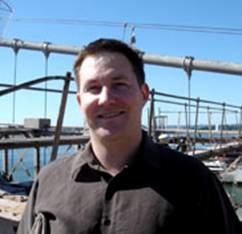
Dr. Richard O'Shaughnessy received his Ph.D from Caltech in 2003 and B.A. from Cornell in 1996. Dr. O'Shaughnessy's current research is focused on using gravitational waves emitted by binary systems of compact objects, like the progenitors of gamma- ray bursts, to learn how often binary compact objects merge; what properties the merging binaries might have; and how we might interpret the number and distribution of recovered sources as constraints (on source models; cosmological parameters; and general relativity itself). He has been a member of the LIGO Scientific Collaboration since 2000, most recently (2009) serving on the internal review committees for cosmic string and SGR flare searches. Dr. O'Shaughnessy received his B.A. in Astronomy at Cornell in 1996, after working as an undergraduate with Prof. Teukolsky's numerical relativity visualization REU group. During his graduate studies at Caltech with Kip Thorne, he worked on both in LIGO experiment design (minimizing thermoelastic noise in LIGO mirrors) and source physics (e.g., the final plunge of eccentric compact objects into supermassive black holes). After receiving his PhD in 2003, Dr. O'Shaughnessy did postdoctoral research at Northwestern University, where with colleagues he estimated how often gravitational wave detectors like LIGO should observe merging binaries. Since 2007, Dr. O'Shaughnessy has been a research associate at the Center for Gravitational Wave Physics at Penn State University. He and his wife are the happy but occasionally sleep-deprived parents of infant twins.'
With many ground-based gravitational wave detectors now taking data at or near their design sensitivity, gravitational waves should be directly detected within the next decade. This discovery will both confirm a central prediction of general relativity and provide a new, unobscured perspective on the most energetic events in the universe. In this talk I will survey the the goals, methods, and prospects for gravitational wave astronomy, with emphasis on the best-understood source: merging compact objects (double black holes or neutron stars). Based on the expected number of mergers that should be seen by second and third generation instruments, I will explain how their detected ensemble of merger waveforms can provide new insights into the evolution of binary stars in isolated and dense environments; constrain the central engine of gamma-ray bursts; and even constrain the properties of nuclear matter.
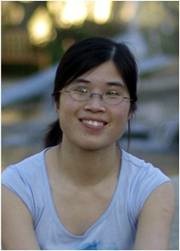
Dr. Peng received her Ph.D. degree in Astronomy and Astrophysics from the University of Chicago in 2006. During 2006-2009, she worked as a Sherman Fairchild postdoctoral fellow at the California Institute of Technology. She is currently a senior postdoctoral researcher at Caltech. Dr. Peng's research interest is in theoretical and computational high-energy astrophysics, with strong connections to observations. In particular, she is interested in studies of explosive stars, including but not limited to type I X-ray bursts, type Ia supernovae and core-collapse supernovae. She is also interested in gamma-ray bursts and physical processes in clusters of galaxies.
Explosive stars not only are important in enriching heavy elements in the Universe but also provide natural laboratories for us to explore extreme physics. In this talk I will focus on one specific type of explosive stars, type I X-ray bursts, which are believed to be thermonuclear flashes on accreting neutron stars. Recent long-term X-ray observations allow for discovery of faint X-ray burst sources as well as new types of X-ray bursts (long bursts and superbursts). It is time to refine the current burst theory by incorporating additional physical processes that are important for faint X-ray burst sources. I will describe how gravitational sedimentation -- the sink of heavier elements -- affects burst ignition conditions, burst properties and nucleosynthesis yields. I will highlight why this process is important in providing fuel for superbursts, and then provide a theoretical explanation for some long bursts. At the end I will outline future research directions in the area.
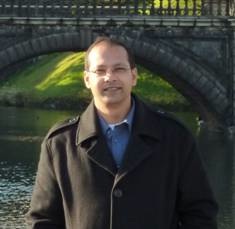
Dr. Razzaque is a high-energy Astrophysicist. His primary research interest is modeling gamma ray, cosmic ray and neutrino emission from astrophysical objects such as gamma-ray bursts, core-collapse supernovae, neutron stars and active galactic nuclei. He is also interested in modeling stellar background radiation, the main source of energy in the universe after cosmic microwave background radiation, and its cosmological evolution. Dr. Razzaque is a member of the Fermi Gamma Ray Space Telescope Collaboration being interested in observational gamma-ray astronomy. Formally he was a member of the IceCube Neutrino Observatory and the RICE Neutrino Experiment and served as an in-house theoretician for these experiments. He also served as an organizer for the Division of Astrophysics sessions in the last two April meetings of the American Physical Society, as well as a member of the APS commissioned team that produced the document titled "The Gamma Ray Burst section of the White Paper on the Status and Future of Very High Energy Gamma Ray Astronomy." Dr. Razzaque received his Ph.D. degree in Physics from the University of Kansas in 2002. He worked as a postdoctoral fellow at the Penn State University before moving to the Naval Research Laboratory in 2008 as a holder of the National Research Council Research Associateship.
Powerful astrophysical sources such as gamma-ray bursts (GRBs), core-collapse supernovae, neutron stars and active galactic nuclei emit high-energy gamma rays, and possibly high-energy cosmic rays and neutrinos. Fermi Gamma Ray Space Telescope, launched in 2008, is providing an unprecedented view of the gamma-ray sky from the 100 MeV to above 100 GeV energy range. Results from Fermi have revealed new insights into these sources as well as the energy content of the universe. I will discuss Fermi results on GRBs, interpretations of high-energy gamma-ray emission, and models of cosmic ray and neutrino emission. I will also introduce a new model for the background starlight radiation in the universe and discuss Fermi results to constrain the intensity of such radiation ions.

Dr. Kurtis Williams received his B.S. in Physics and Astronomy & Astrophysics from Penn State University in 1996. He then spent a year as a Fulbright Fellow at the Max-Planck-Institute for Extraterrestrial Physics in Garching, Germany, studying the X-ray properties of quasars and the brewing abilities of Bavarians. In the fall of 1997, Williams entered graduate school in Astronomy & Astrophysics at the University of California Santa Cruz, where his thesis worked focused on white dwarfs in open star clusters. After receiving his PhD in 2002, Williams became a postdoctoral researcher at the University of Arizona, studying the influence of line-of-sight mass structures on strong gravitational lenses. Since 2006, Williams has been an NSF Astronomy & Astrophysics Postdoctoral Fellow at the University of Texas at Austin, returning to his white dwarf roots and exploring the connections between white dwarf stars and supernovae. Williams is also active in astronomy outreach, especially in Internet venues, and he has been senior scientific staff on McDonald Observatory continuing education workshops for high school science teachers.
White dwarf stars are the end of stellar evolution for the vast majority of stars in the Universe. As such, they are useful probes of the final stages of stellar evolution. In addition, white dwarfs are laboratories for physics in extreme conditions, including the behavior of degenerate material, diffusion processes, and nuclear fusion processes. I will present results of ongoing studies of the white dwarf progeny of the most massive stars that form white dwarfs. These studies are shedding light on the dividing lines between stars that end their lives as white dwarfs and those that explode as core-collapse supernovae and provide crucial observational constraints on the physical processes that drive massive stars to shed 80% of their mass at the end of their lives. In addition, I will discuss an enigmatic class of white dwarfs, those with carbon-dominated atmospheres, that likely are the remnants of stars massive enough to ignite carbon fusion. The unique properties of these white dwarfs again suggest that we are probing physical properties in stars near the border of the supernova-white dwarf transition.
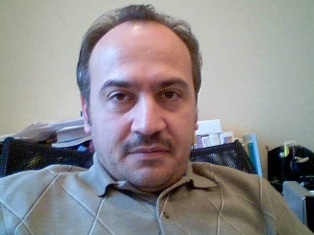
Prof. Hasan Coskun received his Ph.D. in 2003 from Texas A&M University. Dr. Coskun's research interests are manifold. He has worked in algebraic combinatorics where he generalized certain celebrated one dimensional results to higher dimensions. In particular, he has constructed, in a joint work, a new family of elliptic symmetric rational functions that generalize most known families of symmetric polynomials including well-known Macdonald polynomials. In addition, Dr. Coskun proved n-dimensional multiple analogues of the classical Euler Pentagonal Number Theorem, famous Rogers-Ramanujan identities and Andrews-Gordon identities, etc. Recently, he has pioneered a new line of research where he constructed multiple n-dimensional analogues of various families of special numbers including Stirling, Bernoulli, Bell, Catalan and Fibonacci numbers in terms of his generalized binomial coefficients. Dr. Coskun has expanded his research interests in recent years into optimal estimation and model based inverse problems mainly in the area of mathematical biology. One of his current joint project is on vocal tract modeling via inverse spectral and scattering problems. On a separate joint project, he is working on analysis of cell motility to characterize and classify cancer cells.
Multiple binomial coefficients and multiple analogues of several celebrated families of related special numbers will be constructed. These higher dimensional generalizations include the first and the second kind of Stirling numbers, Bell numbers, Bernoulli numbers, Catalan numbers and Fibonacci numbers. Certain significant applications will also be presented including two discrete probability measures on the set of all integer partitions.
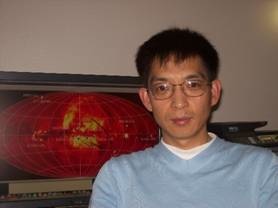
Dr. Yangsen Yao received his B.S. in Physics (1994) from Sichuan University, China, and earned his Ph.D. in Physics/Astrophysics from the University of Alabama-Huntsville in 2004. He carried out postdoctoral research at the University of Massachusetts-Amherst and Massachusetts Institute of Technology. Now he is working as a research associate at the University of Colorado-Boulder. Dr. Yao is a high-energy observational astronomer and his research interests cover a broad range of topics, including neutron-star and blackhole X-ray binaries, interstellar dust grains, galaxy formation and evolution, and cosmology. His current research focuses are the hot phase interstellar and intergalactic media, aiming to reveal the structure of the Milky Way and to search for the "missing baryons" in the local universe.
This presentation will review the recent progress in high-resolution X-ray spectroscopic studies of the hot gas in and around the Milky Way and in nearby galaxies. This high temperature gaseous component, at small scales, is believed to play a key role in regulating formation and adjusting interplay of various galactic components. At large scales, this galactic ingredient is suggested to be a predominant baryonic reservoir of a galaxy. The detection of highly ionized X-ray absorption lines of oxygen, neon, and iron along sight lines of many Galactic and extragalactic sources allows us for the first time in X-ray to characterize the spatial, thermal, kinematic, and chemical properties of the hot gas in our Galaxy. However, the comparisons of the line absorptions among different Galactic sight lines and between the Galactic and extragalactic sight lines haven't revealed the existence of the putative large-scale hot gas around the Milky Way. Direct measurement of the hot gas around nearby galaxies reaches similar conclusions. I will discuss these results in context of galaxy formation and evolution.
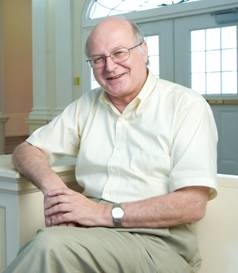
Prof. Ryszard Stroynowski's research interests lie in the area of experimental high-energy particle physics and the structure of matter. Since 1996 he has worked on the ATLAS project at the Large Hadron Collider at CERN, the European Center for Nuclear Research, in search of new physics phenomena at the highest energies accessible at accelerators. In his early work he studied the partonic structure of the proton that provided the experimental basis for the QCD — the theory of strong interactions. He then studied the properties of heavy quarks in several experiments at electron - positron colliders and led an extended effort to understand the properties of the tau lepton. Since 1991, Stroynowski has been a professor of physics at Southern Methodist University in Dallas, where he is chair of the physics department. He is a fellow of the American Physical Society and a member of the steering group of the NATO Science for Peace Program. Stroynowski was a staff scientist at the Stanford Linear Accelerator Center and a senior research associate and lecturer at Caltech. As an undergraduate he studied physics at the University of Warsaw, where he obtained a Magister degree (M.Sc.) in 1968, and worked as an assistant in the physics department. He obtained his Ph.D. degree in 1973 at the University of Geneva while working as a research scientist at CERN. Born in Lodz, Poland, Stroynowski grew up in Warsaw, Poland. He has lived in the United States since 1975, becoming a naturalized citizen in 1980. He is married and has two daughters.
After 15 years of construction and commissioning the Large Hadron Collider at CERN is ready to start collecting data that may hopefully provide an answer whether any of the theoretical predictions of the existence of new phenomena correspond to reality. I will describe the status and plans of the LHC accelerator and of the ATLAS detector.

Prof. Geoffrey D. Clarke received his Ph.D in 1984 from the University of Texas Health Science Center at Dallas. He is currently a Professor and Vice-Chair of Graduate Education in Radiology at the University of Texas Health Science Center at San Antonio. His main research interests are:
More information about Prof. Clarke and his research can be found at http://engineering.utsa.edu/bme/BME_program/clarke.html
In the past twenty years great strides have been made in the use of magnetic resonance imaging to evaluate myocardial function, flow and metabolism for the diagnosis and management of heart disease. This presentation will review the development of cardiac MRI methods and discuss their advantages and limitations in the context of competing imaging technologies and current clinical problems. Of specific interest are methods used for measuring vascular blood flow and myocardial blood perfusion. The potential for increasing the diagnostic power of MRI using advanced technological developments, especially parallel imaging and NMR spectroscopy, will also be discussed.
To request a change to this page or to request access to make changes yourself, email helpdesk@tamuc.edu.

